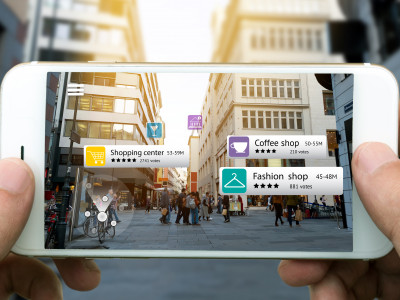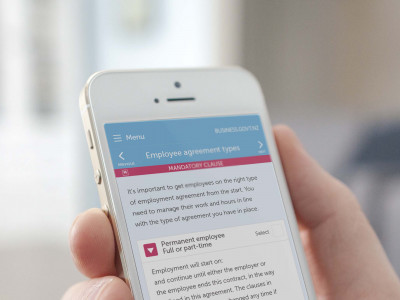Omni-channel experiences: why they matter to your customers and bottom line
As marketers we're all acutely aware that we've entered the age of the customer and that consumers have more information to make decisions on products and services than ever. At the same time, the tolerance for friction in the buyer journey has lessened to such an extent that many of us will switch on a dime if it all becomes too hard.
As the convergence between digital and physical channels accelerates, modern enterprises must bring the various elements of their customer interaction into harmony in order to stay relevant.
Multi-channel vs omni-channel
Most organisations already have multi-channel offerings in place, only when each of those channels for interaction and experience are brought into harmony and leverage customer data in a way which adds value to the interaction, will they have a true omni-channel experience. Multi, as you might expect, refers to having a number of different aspects that aren't necessarily related, while omni - translated from the Latin for 'all' or 'every' - describes a more holistic approach.
According to McKinsey & Company, internet research will have influenced more than half of all retail transactions during 2016. Whilst online transactions continue to grow, consumers still want to touch, experience and assess products in person as a way of de-risking the purchase.
However, the proof of how frequently in-store interactions fail to add sufficient value is being played out in Amazon's complete disruption of the US apparel market. Since purchasing Zappos in 2009 Amazon has gone on to become the 4th largest retailer of apparel and accessories in the United States. Weighing in at $16.7 billion USD in 2015, this was more than department store heavyweights Nordstrom, Khol's and J.C Penney.
Likewise, the expansion of Amazon into the Australian electronics market is anticipated by Citi analysts to cost the likes of Harvey Norman and JB Hi-Fi 19 and 23 percent of their EBIT respectively.
With this in mind, incumbent organisations have begun to evolve their offering into an omni-channel experience. Making the customer journey smooth, seamless and valuable. Whether window shopping through their web browser or walking through the doors of a physical store, consistency and quality of experience is a key competitive advantage.
Delivering customer value and building customer intelligence
Airlines have been doing a particularly good job when it comes to delivering omni-channel. The idea that I can have my ticket, itinerary, lounge pass and even my favourite coffee order stored in my phone is a great example of omni-channel across both digital and physical.
Air New Zealand's CEO, Christopher Luxon recently commented in the airline's Annual Shareholder Review that their investment in digital, loyalty analytics and personalisation would allow them to access significant value from improved customer experience and data.
When you then also consider the amount of data an airline now holds about customers and the intelligence they can build around preferences, travel history and spend you can start to see the value of creating tools and experiences where people willingly give information, which can be used to create a seamless experience for them.
Digitising the right services and keeping human touch where it matters
Various banking apps have replaced a number of in-branch functions, allowing information to be displayed seamlessly across mobile, desktop and to call centre or in-branch staff for better customer engagement and complex transaction management. Bain and Co recently conducted a study of more than 14,000 bank customers across the US, UK, Australia and Canada. They found that between 60-70% of bank teller transactions were of poor quality, either because of errors, or that they would be quicker and more convenient online. The same study also found human based services had a higher net promoter score than digital services. This shows that there is significant value in human interaction for certain transactions. For example, most people have little interest in going into a branch for simple transactions, however when it comes to mortgage applications or major investments, human interaction still gives us comfort and adds value.
Building loyalty and customer stickiness
One of the biggest areas where good omni-channel is largely untapped is in the loyalty space. If you're like most people your wallet is overloaded with loyalty and coffee cards. Often, to save space I leave some of them at home, only to find without fail it's the one I need to use. Starbucks in the United States and Mojo Coffee here in New Zealand have both deployed their own loyalty apps which allow people to manage discounts and loyalty points, order in advance from favourites and load money onto the app to pay with your phone or Apple Watch.
There is the obvious element of convenience but also the subtler lock-in effect of pre-loading money, which can only be spent at these locations. And if you're in a new location? You can use your app to find a coffee shop nearby to spend your preloaded funds. According to Starbucks around 21% of their US based purchases were transacted via their mobile app and consumers preloaded $1.9 billion USD. That's money which has very little chance of being spent anywhere but with Starbucks.
The one caveat which needs to be drawn to these examples is scale. The ability of businesses or brands to deploy digital offerings in a way which gives significant transaction and customer volume to build critical mass to support their investment, as well as to create the volume of data needed to draw any real intelligence or insight.
The omni-channel experience in action
At Solnet we've had the opportunity to work with some of New Zealand's best known brands on omni-channel experience whether it's the full end-to-end or the technology heavy lifting, here are some local examples.
Sky Neon:
Working closely with Sky, Solnet delivered a content management system with apps across iOS, Android, Xbox and Chromecast, as well as desktop browsers. With a platform flexible enough to allow other vendors to build apps for additional devices as required.
The outcome is a single, unified content portal which customers can use across multiple devices for curated content based on their preferences and viewing history. Find out more.
Fonterra Farm Source:
Working with partners and Fonterra's internal teams, Solnet helped delivered a suite of applications allowing farmers to receive and utilise their production data, along with news about their co-op. These applications also integrate with Fonterra's backend systems and the wider Farm Source network. This means that Fonterra farmers have a single sign-on to manage their production data, Farm Source store accounts, retail store rewards, offers and news. Find out more.

